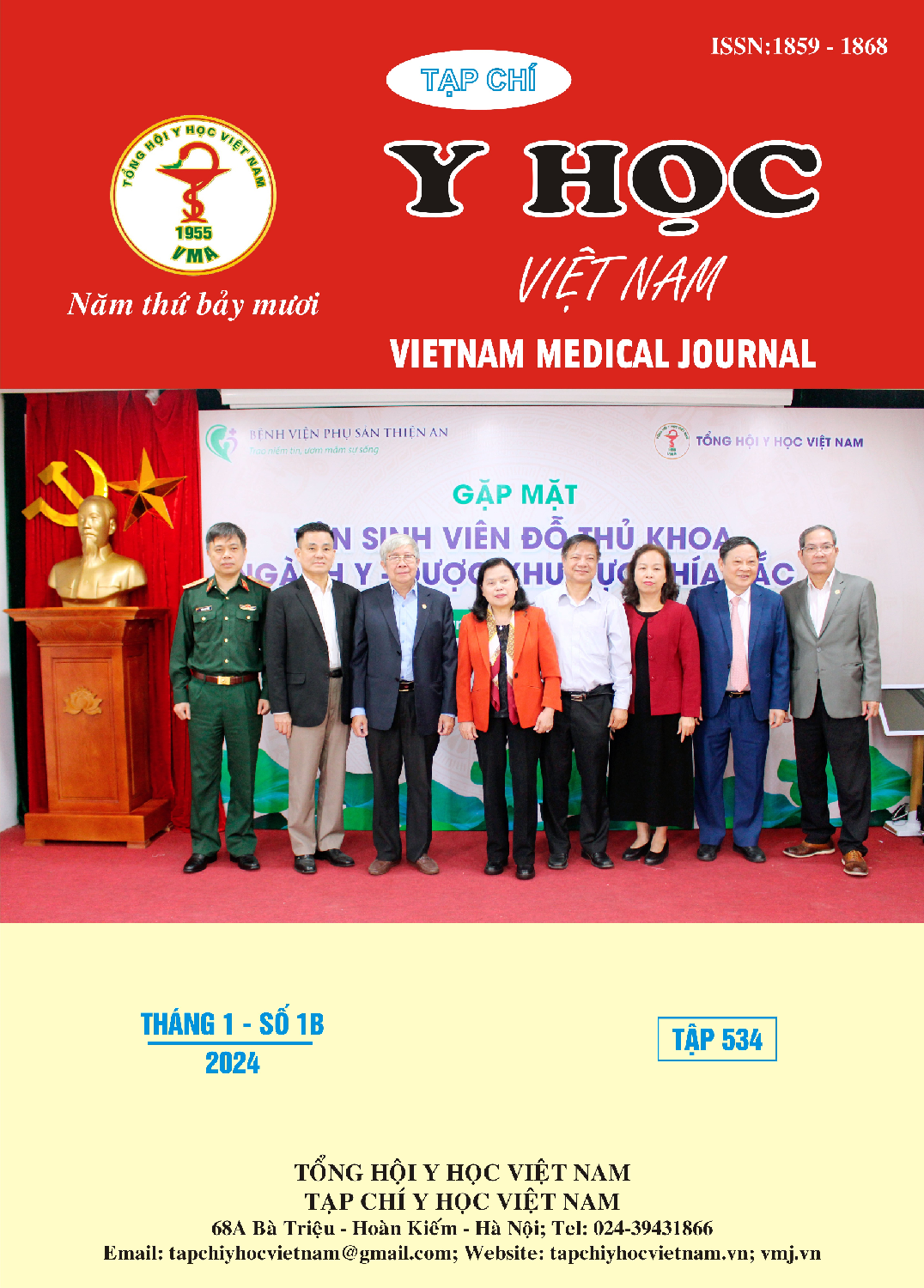HANDGRIP STRENGTH AND SOME RELATED FACTORS IN OLDER PATIENTS WITH PARKINSON DISEASE
Main Article Content
Abstract
Objective: to determine the rate of decreased handgrip strength and some related factors in older patients with Parkinson's disease. Methods: A cross-sectional descriptive study in 120 patients with Parkinson's disease ³ 60 years old. Handgrip strength was measured using the Jamar TM Hydraulic Hand Dynamometer. Geriatric syndromes were assessed: polypharmacy, nutritional status, cognitive function, depression, fall risk, and sleep disorder. Results: The rate of decrease in handgrip strength was 63.3%, 68% in men, and 60% in women. The proportion of patients with reduced handgrip strength in the age group ≥70 years was statistically significantly higher than that in the age group 60-69 years. The proportion of patients with reduced handgrip strength in Parkinson's disease stage 3-5, with spastic symptoms, was statistically significantly higher than in Parkinson's disease stage 1-2, without stiffness symptoms. The proportion of patients with decreased handgrip strength in the group with depression, at risk of malnutrition/malnutrition, and with cognitive impairment was statistically significantly higher than the group without the above geriatric syndromes. In summary, the rate of decline in handgrip strength in the elderly with Parkinson's disease is quite high. Conclusion: there is an association between decreased handgrip strength and advanced age, Parkinson's disease stage 3-5, symptoms of spasticity, risk of malnutrition/malnutrition, depression, and cognitive decline.
Article Details
References
2. Tan AH, Hew YC, Lim SY, et al. Altered body composition, sarcopenia, frailty, and their clinico-biological correlates, in Parkinson's disease. Parkinsonism Relat Disord. 2018;56:58-64. doi:10.1016/j.parkreldis.2018.06.020
3. Håglin L, Törnkvist B, Edström M, Håglin S, Bäckman L. Handgrip Strength and Anthropometry in Parkinson's Disease at Diagnosis. Parkinsons Dis. 2022;2022:1516807. Published 2022 Jul 2. doi:10.1155/2022/1516807
4. Chen LK, Woo J, Assantachai P, et al. Asian Working Group for Sarcopenia: 2019 Consensus Update on Sarcopenia Diagnosis and Treatment. J Am Med Dir Assoc. 2020;21(3):300-307.e2. doi:10.1016/j.jamda.2019.12.012
5. Roland KP, Jones GR, Jakobi JM. Parkinson's disease and sex-related differences in electromyography during daily life. J Electromyogr Kinesiol. 2013;23(4): 958-965. doi:10.1016/ j.jelekin.2013.03.008
6. Miller AE, MacDougall JD, Tarnopolsky MA, Sale DG. Gender differences in strength and muscle fiber characteristics. Eur J Appl Physiol Occup Physiol. 1993;66(3):254-262. doi:10.1007/ BF00235103
7. Solomon NP, Robin DA, Luschei ES. Strength, endurance, and stability of the tongue and hand in Parkinson disease. J Speech Lang Hear Res. 2000;43(1):256-267. doi:10.1044/jslhr.4301.256
8. Huang X, Ma J, Ying Y, Liu K, Jing C, Hao G. The handgrip strength and risk of depressive symptoms: a meta-analysis of prospective cohort studies. Qual Life Res. 2021;30(9):2467-2474. doi:10.1007/s11136-021-02858-6
9. Akbar F, Setiati S. Correlation between hand grip strength and nutritional status in elderly patients. J Phys: Conf Ser.2018; 1073(4), 042032.
10. Muhammad T, Maurya P. Relationship between handgrip strength, depression and cognitive functioning among older adults: Evidence from longitudinal ageing study in India. Int J Geriatr Psychiatry. 2022;37(8): 10.1002/ gps.5776. doi: 10.1002/gps.5776.


